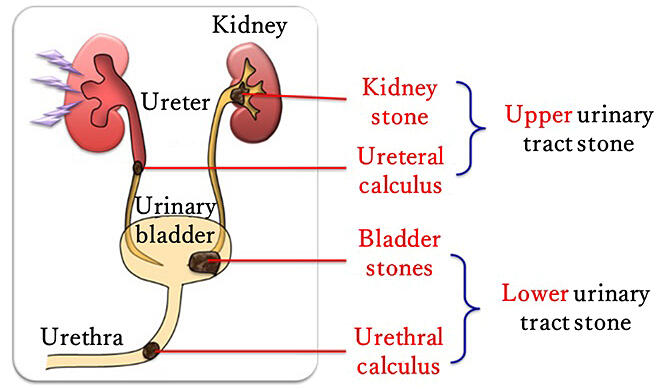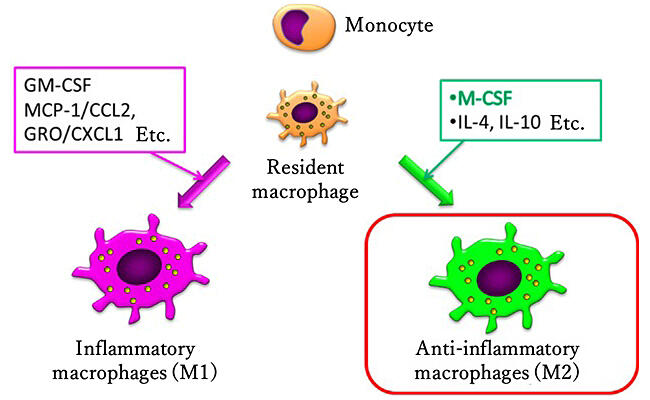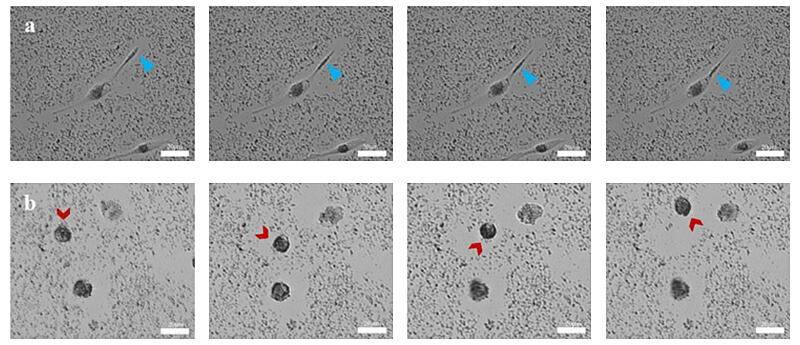A group of researchers at Nagoya City University and their collaborators has succeeded in producing macrophages that dissolve the stones that clog urinary passages and cause severe pain. They were generated from iPS cells (induced pluripotent stem cells) generated from human blood cells. These advances are expected to be useful in the search for drugs that prevent or dissolve urinary tract stones, which are becoming more common in an increasing number of patients.
UTIs are a disease in which stones formed in the kidneys clog the ureters (the passageway for urine), causing intense pain in the back and other body parts. If the diameter of the stone is less than 1 cm, the general treatment is to wait for the stone to pass out of the body spontaneously with urine. When the stone size is greater, the stone is crushed using shock waves or an endoscope.

Provided by Associate Professor Atsushi Okada of Nagoya City University
The recurrence rate is as high as 50%−60% in 5 years, but the effective prevention method has been "drinking enough water" for about 2,000 years. Many people need new prophylaxis or to take steps to decrease the risk of recurrence.
Atsushi Okada, Associate Professor of the Department of Nephro-urology at the Graduate School of Medical Sciences at Nagoya City University discovered the spontaneous disappearance of urinary tract stones in a 2007 study using mice. From 2009 to 2010, he found that the stones were dissolved by macrophages. Subsequently, he found that M2-type macrophages, a different type of macrophage that causes inflammation and promotes stone formation, are useful in preventing stones. As it is difficult to extract many macrophages from human blood, he and Dr. Tomoki Okada, an Assistant Professor at the same hospital, confirmed whether generating many macrophages from human iPS cells and dissolving stones is possible.

Provided by Okada
The iPS cells were generated from human blood cells and differentiated into macrophages over about 1 month. Biologically active substances were used for differentiation into inflammatory type M1 and anti-inflammatory type M2 macrophages, and calcium oxalate monohydrate, which accounts for approximately 80% of urinary tract stones, was added. It was observed that the M2 type migrated and dissolved the surrounding crystals. The maximum dissolution rate was 5.6 times higher than that of type M1.

Provided by Okada
"This is the first demonstration in the world of the stone dissolution phenomenon using macrophages derived from human iPS cells," said Atsushi Okada. He further stated that although it is not realistic from a cost standpoint to culture macrophages themselves and turn them into a stone-dissolving drug, it is expected to be used to find drugs effective in preventing and dissolving stones when performing "drug repositioning" to find drugs that can be converted from existing drugs.
The research, in collaboration with Yokkaichi Nursing and Medical Care University, was published on March 30 in the scientific journal Urolithiasis.
Original article was provided by the Science Portal and has been translated by Science Japan.




